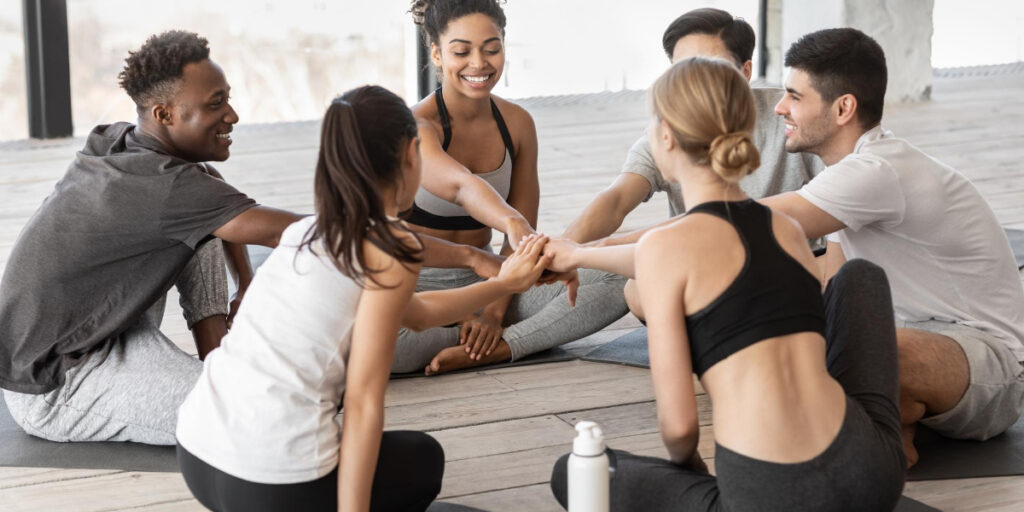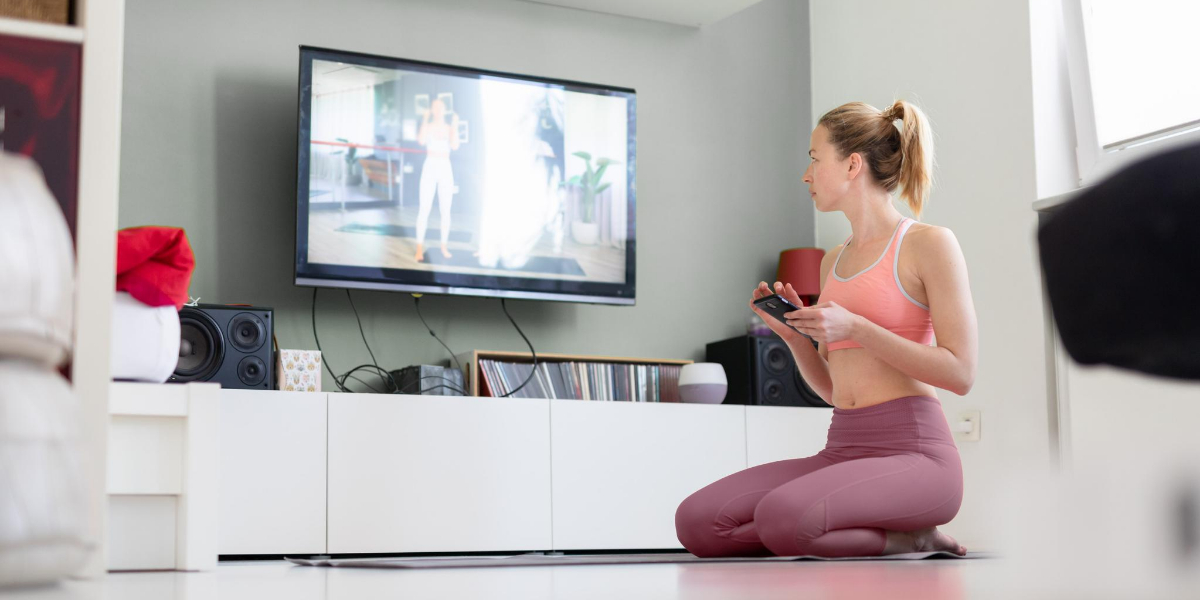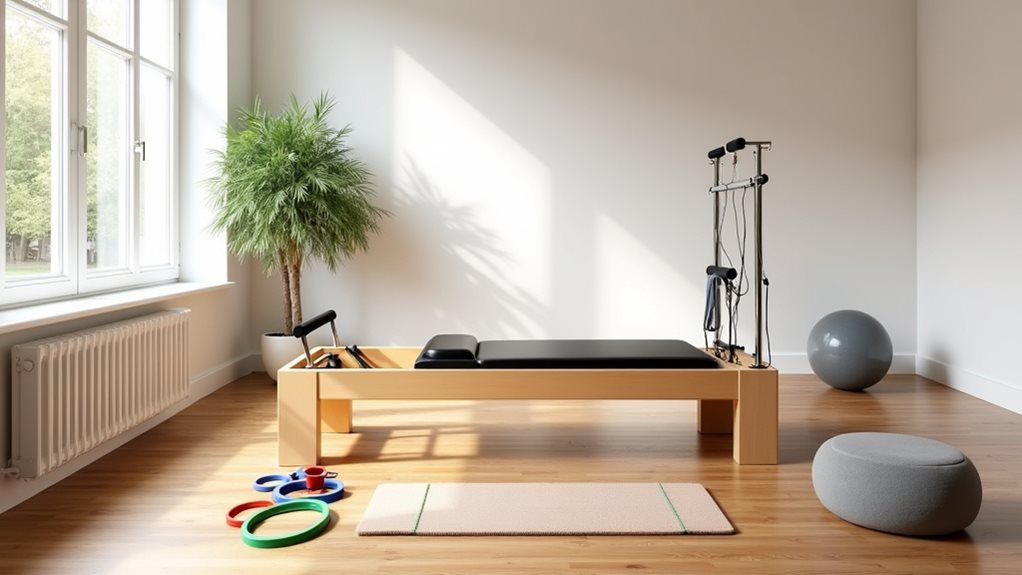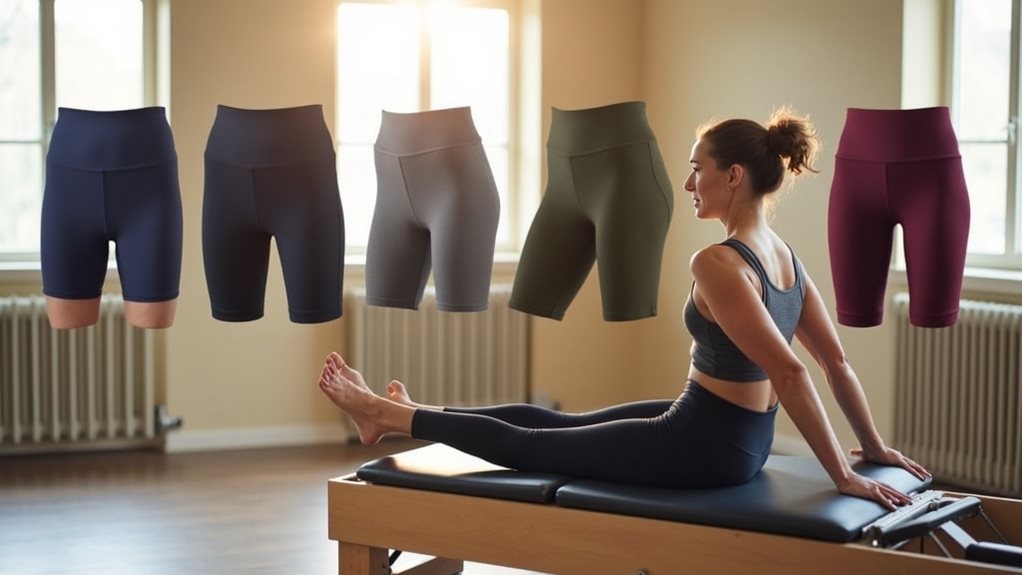Are you looking for a way to get fit without going to the gym? Do you hate working out? Or maybe you just want to try something new?
Pilates at home is an effective option for anyone who wants to work out without going out. No equipment is required, although a mat is recommended, and there are lots of free lessons available online.
Practising at home will help improve your core strength, balance, flexibility, and posture. In addition, it helps reduce stress and anxiety while improving sleep quality.
Pilates has been practised since the early 1900s and was developed by Joseph Pilates. He believed that exercise should focus on core strength and posture and his vision has become one of the most popular fitness programs in the world.
Today, Pilates exercises are used to improve balance, coordination, and muscle tone as well as treat injuries such as back pain, knee problems, and shoulder issues.
How To Do Pilates Exercises At Home
Pilates is a popular workout that can be performed at home, which is good news for beginners. I would caution against diving in if you’ve never had tuition from a qualified instructor; they can ensure you understand the basics, so you’re confident in your movements.
To learn how to do Pilates exercises at home, I’d first recommend buying a mat. While you can do exercise without a mat, it’s better in the long run to use one, as I explore in this article: Can I do Pilates without a mat?
Beginner Pilates Workout
If you’re new to Pilates, give my beginner workout a try. This is also a great workout if you’re experienced, but out of practice, so try this before moving to an intermediate lesson.
Intermediate Pilates Workout
You need to find 30 minutes and I promise you that by the end of this workout you will feel more connected with your body.
You will 100% feel the work in your core as we move together on our mats. Pilates looks so simple …. It’s VERY deceiving!
If you know Pilates then I know you will be smiling and nodding your head in agreement.
What are the benefits of doing Pilates at home?
There’s nothing worse than going to the gym only to realize that you hate every minute of it. Pilates is perfect for beginners who just want to tone up without having to spend hours in a crowded studio.
1. It’s a great workout for your whole body
Pilates is a great way to ease into a longer workout. It is a challenging workout that feels ‘doable.’
It has many different exercises, is easy to follow and easy to keep up with, and that make it a great workout for everyone.
2. It’s a good way to maintain your flexibility
Pilates is a great way to improve and maintain flexibility and range of motion. It stretches the muscles dynamically and actively, which helps increase the range of movement. This can lead to improved strength and exercise performance, as well as preventing injury.
3. It can help improve your posture
Pilates helps improve your posture by increasing muscle strength and endurance. It requires deep awareness, which can help you stay aware of your body throughout the workout. As a result, Pilates can also improve your control, endurance, and balance.
4. It can improve your mood
Pilates can be an effective way to improve mood and provide some benefits. By reducing stress and promoting correct blood flow, Pilates can lead to a feeling of happiness and well-being.
5. It can increase your energy
Pilates is a low-impact exercise that can help to stimulate feel-good hormones, oxygen flow and blood circulation. This can lead to improved energy levels, reduced anxiety and fatigue, and an overall boost in mood.
6. Lower cost
Maintaining a gym membership or taking private lessons adds another regular outgoing. Practicing at home means you can reduce, or eliminate, this additional cost.
7. Flexibility
If you’ve got a very busy schedule, it can be difficult to find a class at a time that works for you. With a home workout you don’t have to worry about conflicting schedules or finding a spot in a class, plus you have the flexibility to customize your workout to fit your own needs and abilities.
Are there any cons of doing Pilates at home?
Of course, there are also some drawbacks to doing Pilates at home.
The major drawback is not having an instructor on hand to ensure you’re performing the moves correctly, which could lead to injury.
Following along with someone on screen is fine if you’ve already perfected your movements, but beginners will undoubtedly need feedback to ensure they’re correctly positioned.
In class, I give direct feedback to clients, helping them adjust each position and movement to ensure it’s correct, or adapted based on their needs.
Coming to a class also has the benefit of helping you feel motivated. We’ve all had times when exercise is the last thing we want to do, but by committing to attend a class you are committing a block of time to your wellbeing, and you’ll feel much better afterwards.
If you attend a group class, you’ll also benefit from a new social circle and the support that brings. Your progress and achievements will be recognised by fellow students, plus you gain support from others in attendance when things are difficult.

Finally, although you don’t need equipment for most workouts, Pilates can make use of a wide range of items to provide additional challenge and variety, see: Home Pilates Equipment Guide: Everything You Need to Know to Get Started
For many, buying and storing lots of equipment can be a challenge, whereas attending a class means you’ll have access to whatever equipment is required for that days lesson.
FAQs
What is Pilates?
Pilates is a method of exercise that focuses on developing functional movement patterns. Pilates exercises work the smaller, deeper stabilizing muscles and support joints. Pilates is low impact and creates optimal strength through muscle balance and fine-tuning neuromuscular patterns.
What are the main benefits of Pilates?
Pilates has many benefits that improve overall health and wellbeing. Pilates helps to tone the body, improve strength and flexibility, and can be done in the comfort of your own home. Additionally, Pilates can help relieve stress, anxiety, depression, and chronic pain.
How does Pilates help with flexibility and mobility?
Pilates helps with flexibility and mobility by focusing on lengthening and expanding the muscles instead of bunching them up. The stretches you perform in Pilates are dynamic, which allows for more freedom of movement. Improved flexibility can help with your overall strength and performance. Pilates can help improve your posture and overall health.
How does Pilates help with core strength?
Pilates helps with core strength by targeting the “global muscles” which include the abdominal muscles. Pilates exercises to help with core strength include: pelvic tilts, side-lying flat rows, and plank variations.
How does Pilates help with posture?
Pilates can help improve posture by focusing on alignment and strengthening neglected postural muscles. Additionally, Pilates can help improve flexibility, which in turn can prevent injury and improve overall health.
Sources




